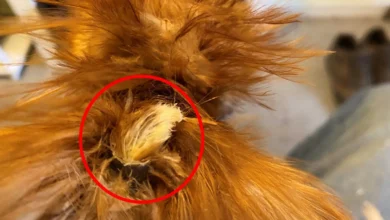The Gould’s Toucanets (Selenidera gouldii) are South American Toucans that are closely related to the Tawny-tufted Toucanets of northwest Amazonia, Golden-collared Toucanets of upper Amazonia, and Spot-billed Toucanets found in the Atlantic Forest biome.
The Gould’s Toucanets were formerly considered conspecific (one species) with the Spot-billed Toucanets.
Distribution / Range
The Gould’s Toucanet is found south of the Amazon across Brazil to northeast Bolivia. A disjunct population exists in Serra de Baturité in the Brazilian satte of Ceará (Caatinga).
They inhabit terra firme forest for the most part but may visit seasonally flooded areas, second growth, and gallery forests within the northern Cerrado region.
Description
The male Gould’s Toucan’s plumage below is black, as is his crown and nape. These areas are chestnut-colored in the female.
Toucans have distinctive coloration, markings, and are particularly noted for their large colorful bills.
The Gould’s Toucanet resembles the Spot-billed Toucanet, except for the bill-pattern.
Its vocalizations are described as slow-paced, grunting calls.
Breeding / Nesting
As part of the courtship display, the male Gould’s Toucan flies skyward with his tail cocked, then drops down while uttering a series of frog-like croaks. This display is repeated several times for a few minutes. The pair may also throw fruit to one another.
Like all of their other activities, nesting happens high up in hollow areas in trees. The bill is not effective for digging or any other type of extensive excavation work and so they must rely on holes already formed by other means.
The nests are not lined, but the two to four shiny white eggs that are laid each year rest on a few wood chips created while enlarging the opening or on various kinds of regurgitated seeds collected for this purpose. Parents share equally in incubation duties, but rarely sit on the nest for more than an hour at a time and the eggs are often left uncovered. Both parents share in feeding fruit to the babies for up to 8 weeks.
After 16 days the nestlings are born blind, with no trace of down on their pink skin. The bill is unremarkable until about 16 days old when it takes on the distinguishing features of the toucan, and requires up to four months to develop fully. Feathers begin to expand at 4 weeks.
Babies have pads on their elbows that protect their feet by keeping them elevated until they fledge.
Breeding in captivity requires attention to a number of details. Even successful breeders report rates as low as 30% for the incubation of eggs.



